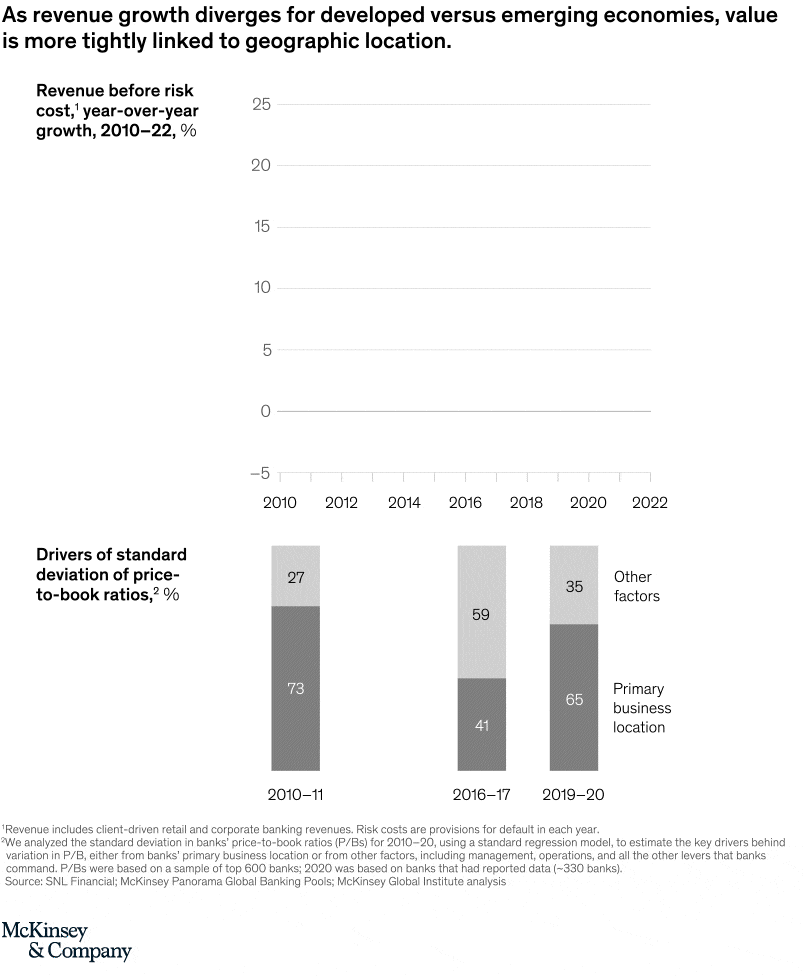What is the key to outstanding performance in banking? Well, it depends on when you ask the question. In 2010, a bank’s core geographic market accounted for 73 percent of the standard deviation in price to book, or P/B (exhibit). At that time, emerging economies had been the global growth engine for the first half of the decade; logically, banks that focused on serving these regions could count on their markets’ growth to boost investors’ confidence in their strategy.

Then, five years ago, there was an inflection point: growth returned to the developed world after the financial and European sovereign-debt crises, and the contributors to value were reversed. In 2017, the region a bank operated in accounted for only 41 percent of its P/B standard deviation.
Now, location is again the biggest factor, accounting for about 65 percent of P/B standard deviation, according to McKinsey analysis. The primary cause is the economic slowdown in developed markets (primarily related to concerns over the US trade conflict with China and an increase in Federal Reserve rates).
What are the implications for banks? While global growth trends are complex and often defy prediction, banks can benefit from anticipating a dynamic, shifting relationship between growth and location. Now, for example, banks in expanding markets should consider prioritizing high-demand products and services and profitable customer segments. Elsewhere, management might consider the potential for investments and acquisitions in flourishing markets. Other options include partnering with fintechs to build digital attackers, improving costs, and streamlining business processes.